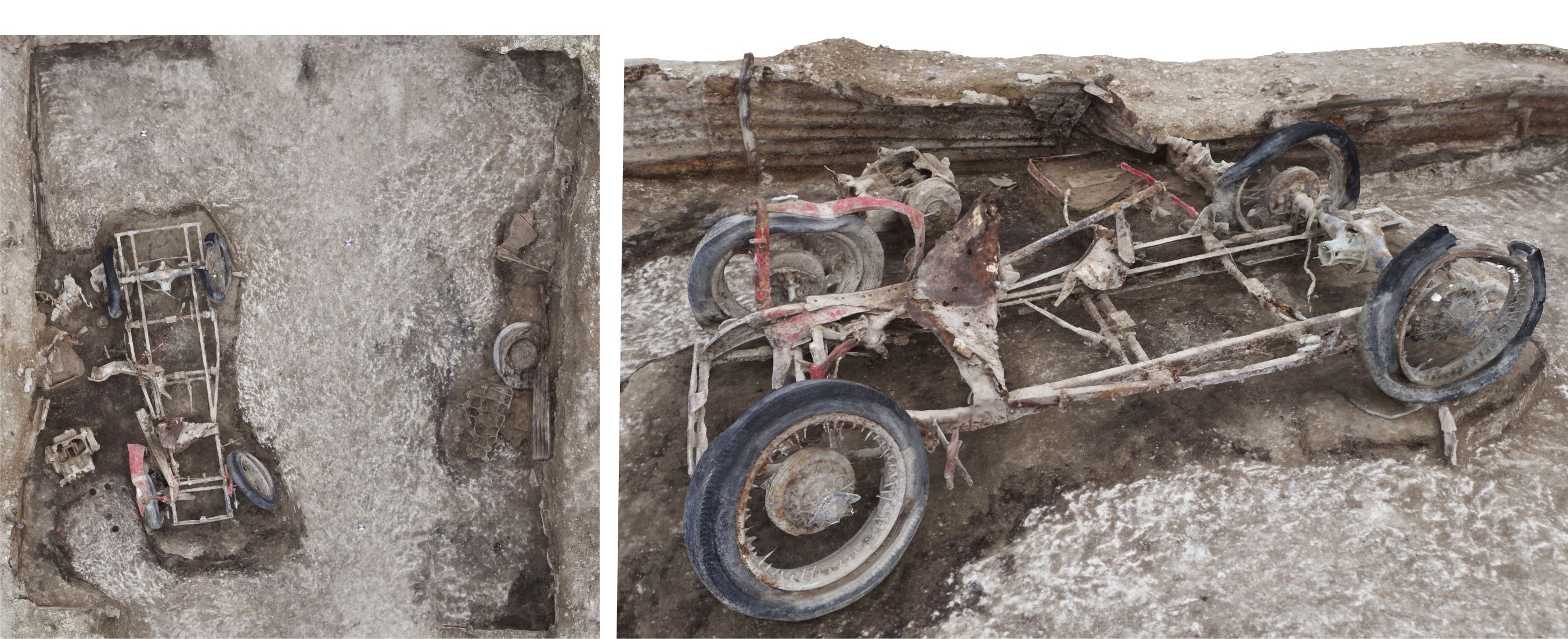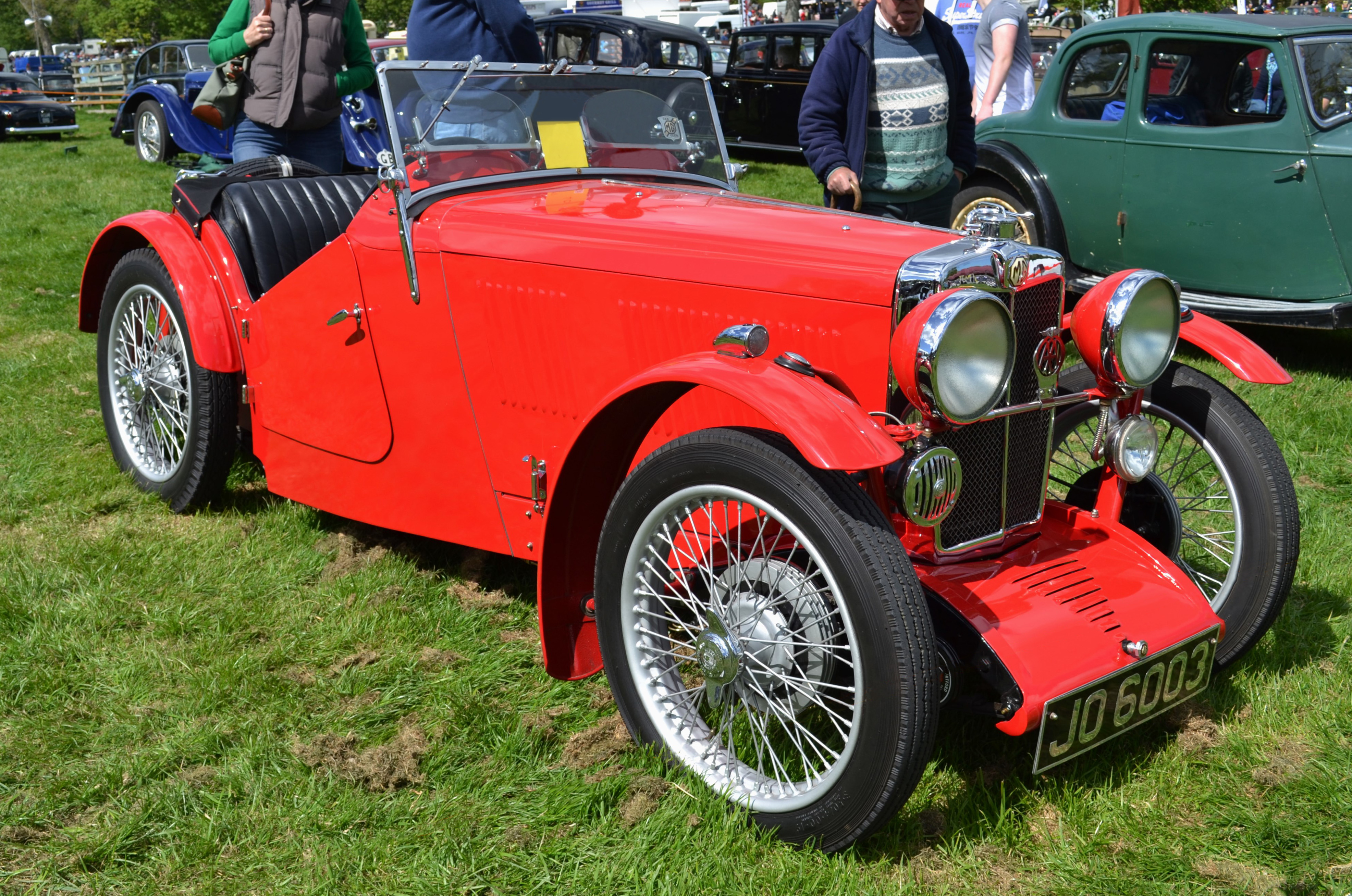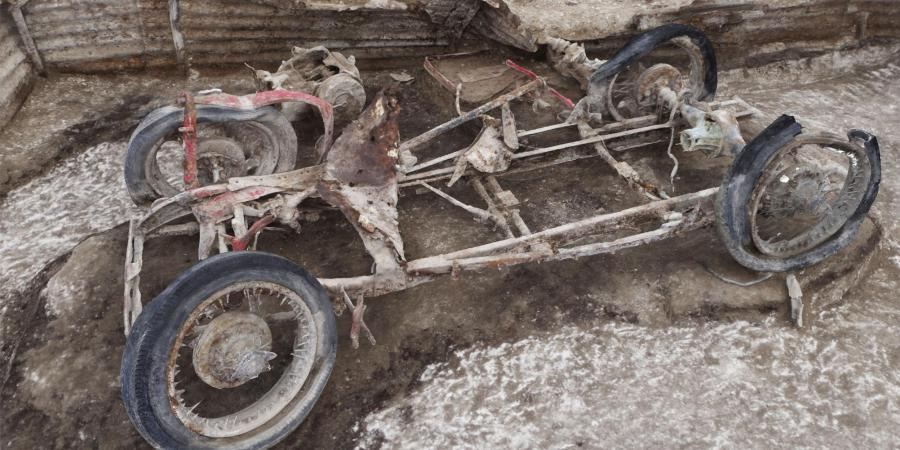Recently we talked about the compelling WWI history of our Larkhill site with its practice trenches, tunnels and personal stories of the men that trained there. Excavations here have been undertaken by Wessex Archaeology, on behalf of WYG, for the Defence Infrastructure Organisation. This week we have another interesting find from the same site, but from its more recent history.
Within a WWII artillery position, we found the remains of an MG car, not an everyday find on an archaeological site! Because of the unusual nature of the find we felt that it needed to be recorded in some detail, but standard photography and a plan really wouldn’t have done it justice. Instead, we decided to record the car in 3D using photogrammetry.
A large number of photographs were taken by our field team, covering every surface of the car that was accessible with a camera. By ensuring that there is sufficient overlap between these photos we are able to then use photogrammetric software to create a 3D model. This functions by identifying common points within different photographs, working out where each of the photographs was taken from, based on this information, and then using the photographs to create a three-dimensional mesh, based on these two data sets. This mesh is then overlain with a texture generated by combining the colour information from all of the photos used in the creation of the model.
The results of all this hard work can be seen in the Sketchfab model below. To share online the mesh and texture quality has been reduced, keeping file size and loading times to a minimum. The original file is of an even higher quality, allowing you to pick out finer details.
Once created the model can be scaled, positioned and used for a range of purposes, including creating images, taking measurements, creating orthophotos (images without distortion or perspective) for draw up, detailed off site analysis, public engagement and more.

Having recorded the car and the numbers stamped on its chassis we set out to discover, with the help of historic car expert Jeremy Hawke, which model car it was and how it might have ended up where it was. The car is a 1932 MG J2 with the serial number J2192. We only know of one owner Mr J. H. Howard of Retford, from July 1934, though it likely had other owners. We can tell from the tyre pattern that the car was probably in use until the early 1960s at which point it seems to have been placed in the artillery position. Many cars were patched up during the 1950s to keep them running and this MG J2 is no different. The engine next to the car is not from an MG and was fitted by welding extra brackets to the chassis, and there are lots of common bodged repairs.

Image © Jaimie Wilson
The car had been dismantled, presumably for repair by a local soldier, but was then seemingly abandoned. Exactly why this happened we cannot be sure of, but the introduction of the MOT test in 1960 was the end for many cars that had been kept going in this way. It may be that the introduction of the MOT also sentenced this MG J2 to the grave. This car was one of only 2083 of this model made. When it was new in 1932 the MG J2 had a top speed of 65mph and would have cost £199 (in the 1930s, the average annual salary was £200, a 3-bedroom house cost on average £350, and a pint of beer was a tuppence!).
Wessex Archaeology would like to thank Jeremy Hawke for his help in uncovering the story of this unique find. If you know anything about the history of this particular MG J2, or would like to discuss using our photogrammetric recording services, please get in touch.
